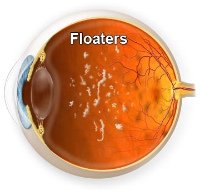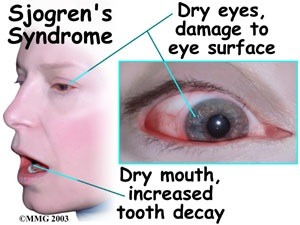|
Ten Ways to Protect Your Eyesight
Routine eye exams are essential to protecting your eyesight, particular after age 60. But there are times you cannot wait until your next schedule eye exam before getting a doctor's attention. Here are ten signals you need to protect your eyesight by seeking timely medical intervention. 1. Your eyes suddenly turn red with sharp pain, and you feel nauseous or you are vomiting. These are symptoms of acute, or narrow-angle glaucoma. The pressure in your eye can cause permanent damage to your eye's optic nerve without immediate medical treatment. 2. You have a sensation of a dark curtain settling across the field of vision in one or both eyes. This can be a symptom of a detached retina, and you have only hours to get surgical intervention to save your eyesight. 3. You see a flood of floaters or showers of sparks in your field of vision. An occasional 
floater or an occasional flash of light in your field of vision is normal. These are usually due to a harmless, age-related condition called vitreous detachment. The inner eye's fluids, called the vitreous humor, can detach from tiny areas of the retina at the back of the eye, and release floaters, or bump against the retina so that you see a flash of light. A massive number of floaters or flashes in your field of vision, however, may mean that your retina is detached. This symptom requires emergency medical care to save sight. 4. You see wavy lines where you should see straight lines. This can be a sign of age-related macular degeneration, which is a leading cause of blindness among people over 65. Prompt medical intervention may prevent further loss of sight and even help you regain sight, but only if you see your health care provider as soon as you notice the symptom. 5. You have floaters, specks, and unexplained blind spots in your field of vision. These can be symptoms of diabetic retinopathy. Extremely high blood sugars can also impede circulation to the lens, so the entire world appears as if you were looking through a dirty glass. Regular eye exams are essential for diabetics, especially after the age of 60. 6. You see halos around lights at night, you can't see bright colors, and/or your vision is blurred or cloudy. These are symptoms of cataracts. Cataracts are not a medical emergency, but if they are left untreated, they will eventually cause loss of eyesight. 7. You have painful eyes, red eyes, and/or a feeling of grit or sand in your eyes. These are the classic symptoms of dry eye syndrome. This syndrome is often associated with an autoimmune disease, such as lupus, rheumatoid arthritis, or 
Sjögren's syndrome, although it can also be a complication of a diet that is extremely high in trans- fat. Liquid tear eye drops and dietary changes can help keep eyes moist, lubricated, and pain-free, and may even prevent loss of eyesight by helping keep the eyes free of infection. 8. You experience suddenly blurry vision in just one eye. Sudden onset of visual distortion in just one eye can be a symptom of a hole in the macula at the center of the eye, where fine focus occurs. This kind of damage to macula is not always progressive, but in some cases the entire retina can tear and cause loss of sight in the eye. 9. You experience a gradual narrowing of vision so that you can only see in a tunnel directly in front of you. This is a sign of uncontrolled, chronic glaucoma. This kind of glaucoma may or may not be painful, and is not a medical emergency. Left untreated, however, it also eventually destroys eyesight. 10. You have double vision, or you see "ghost" images. In some cases, this can be a symptom of aneurysm, brain tumor, or stroke. Immediate medical assessment is advisable. While some of these symptoms are less urgent, any sudden loss of eyesight requires immediate medical attention. Delay can make loss vision permanent. Return From Ten Ways to Protect your Eyesight to Vision Over 60 |




